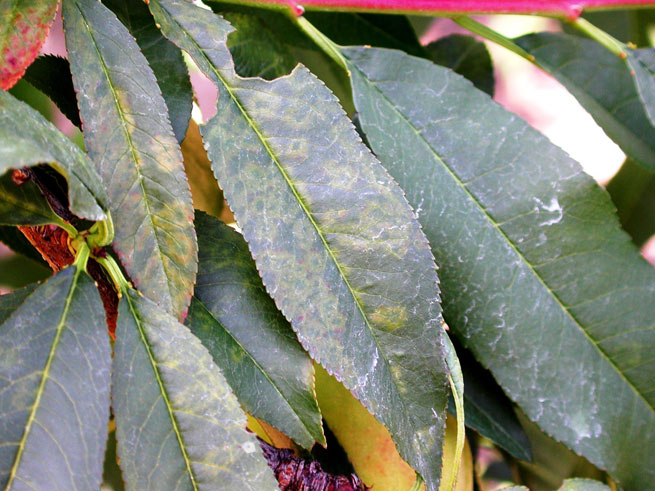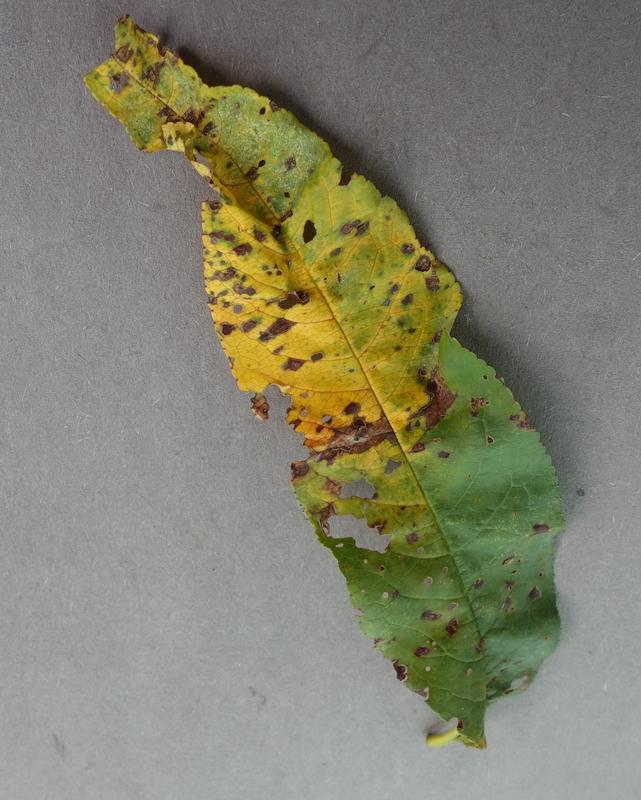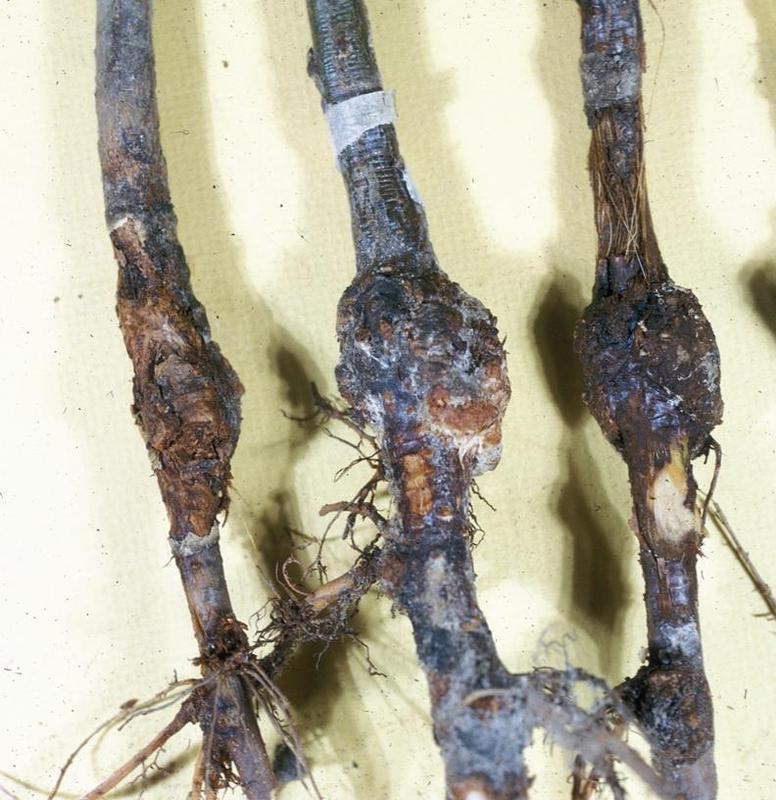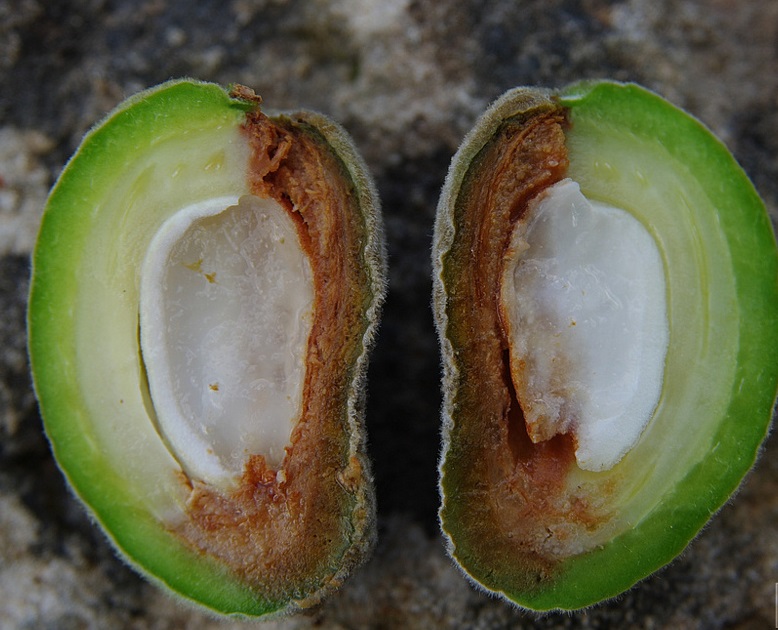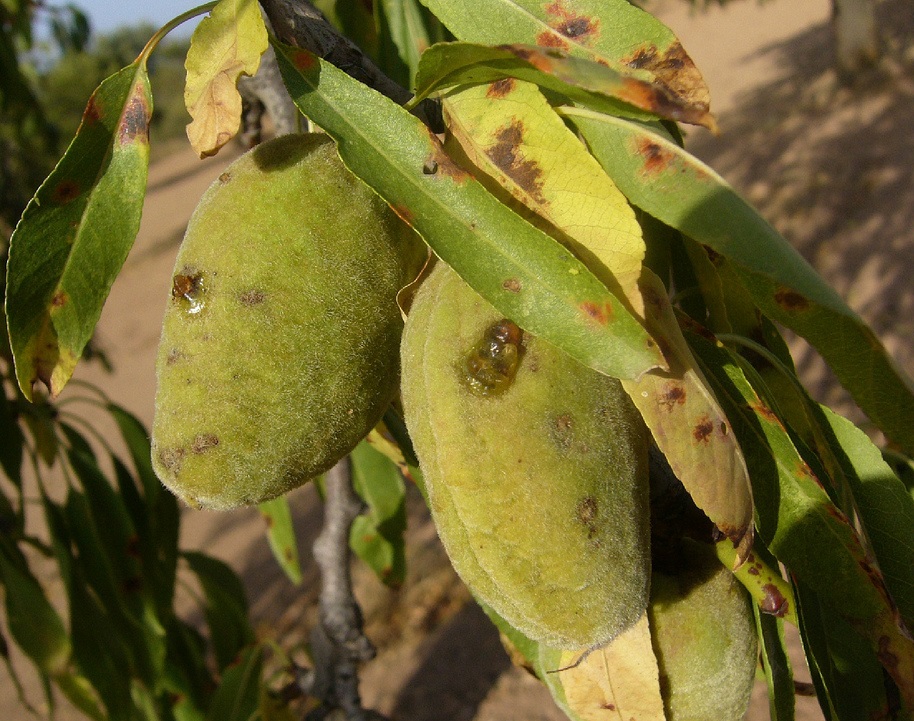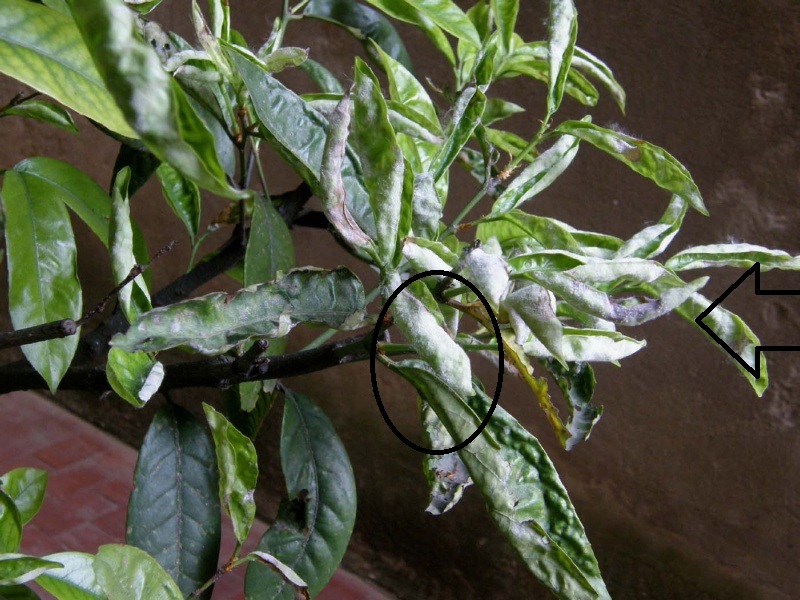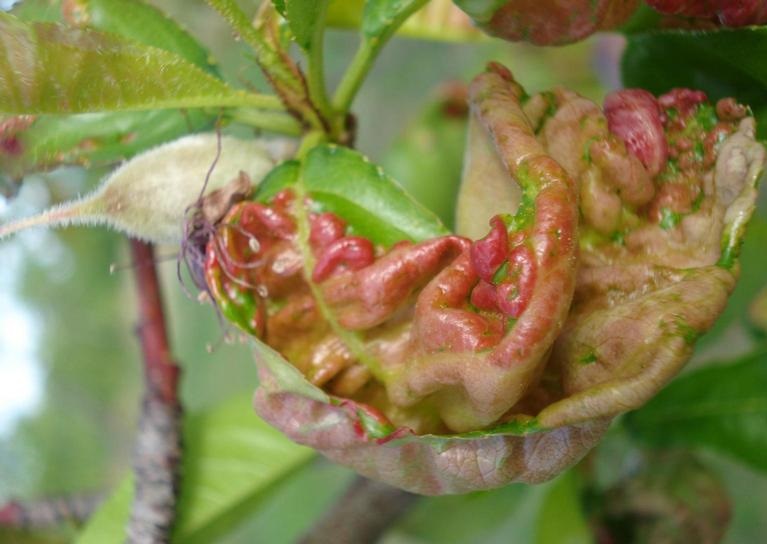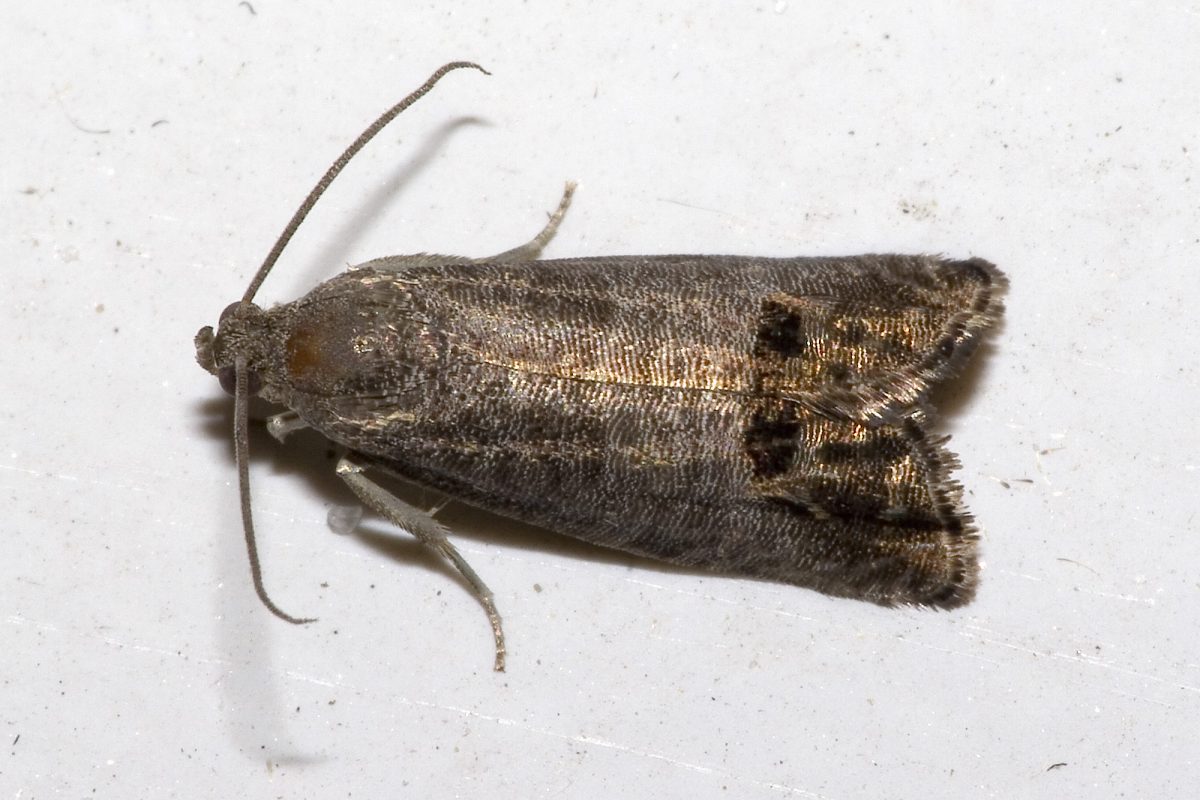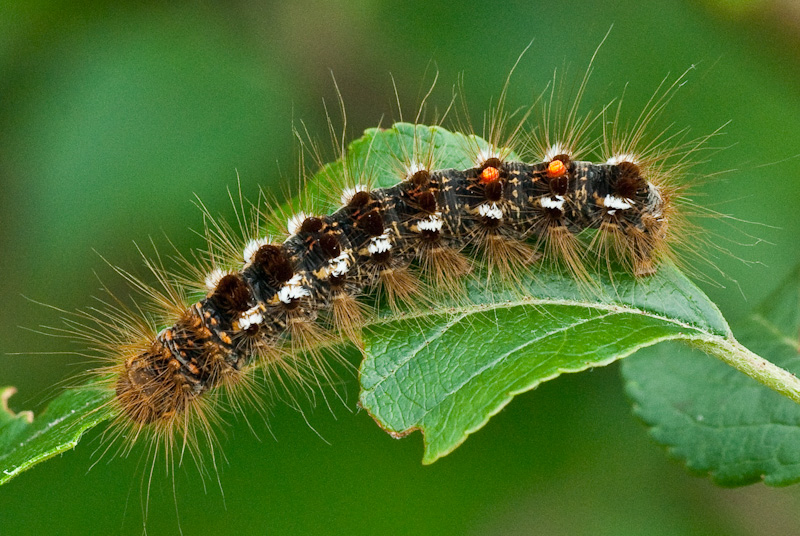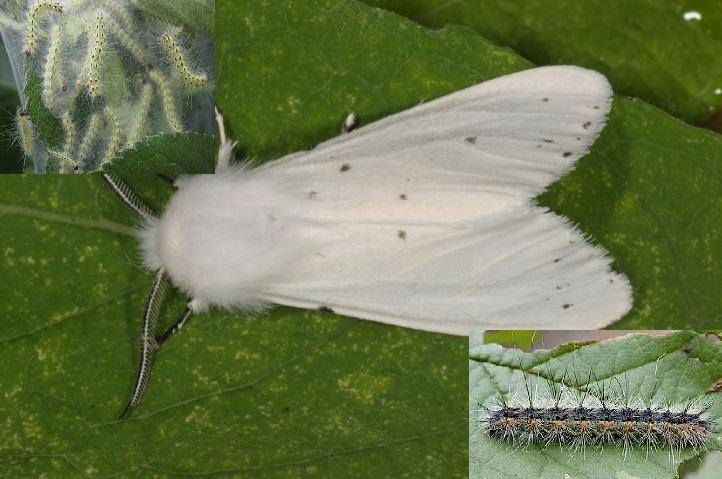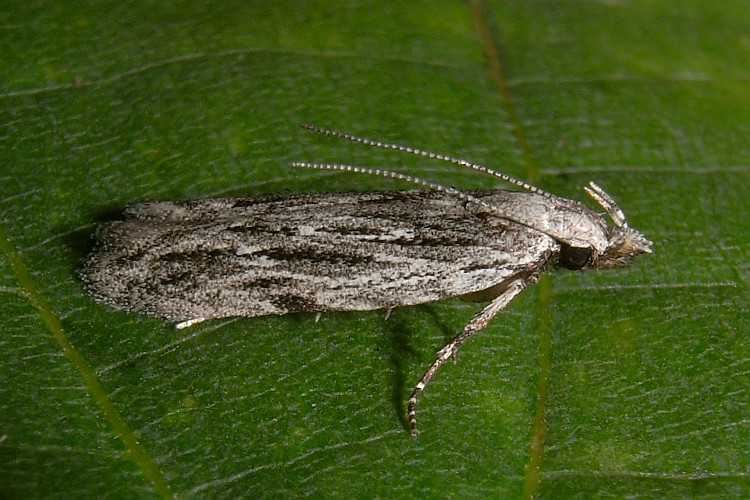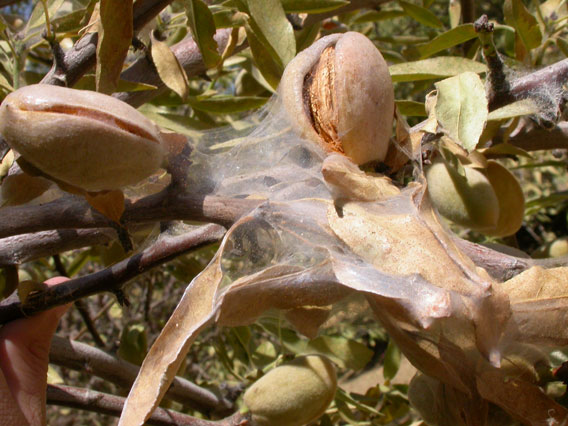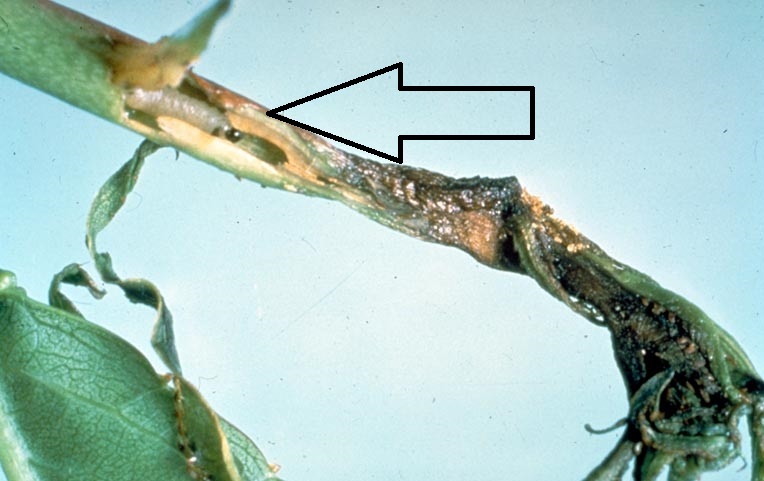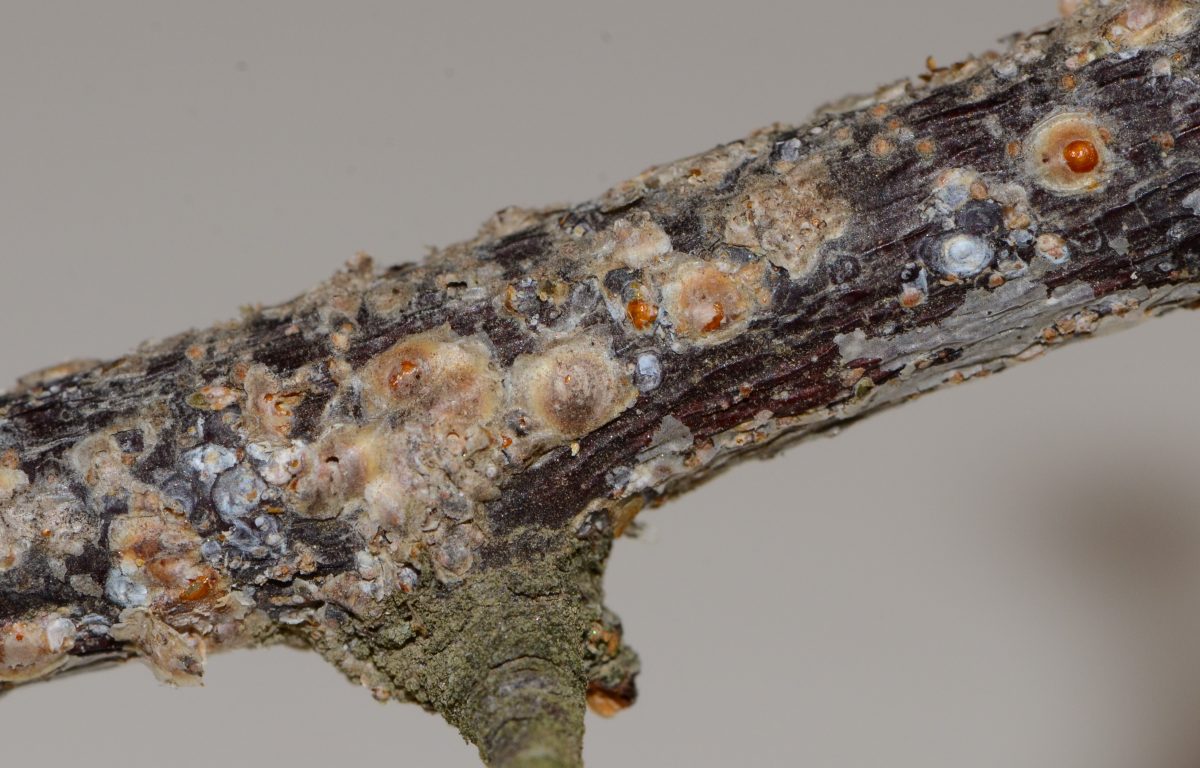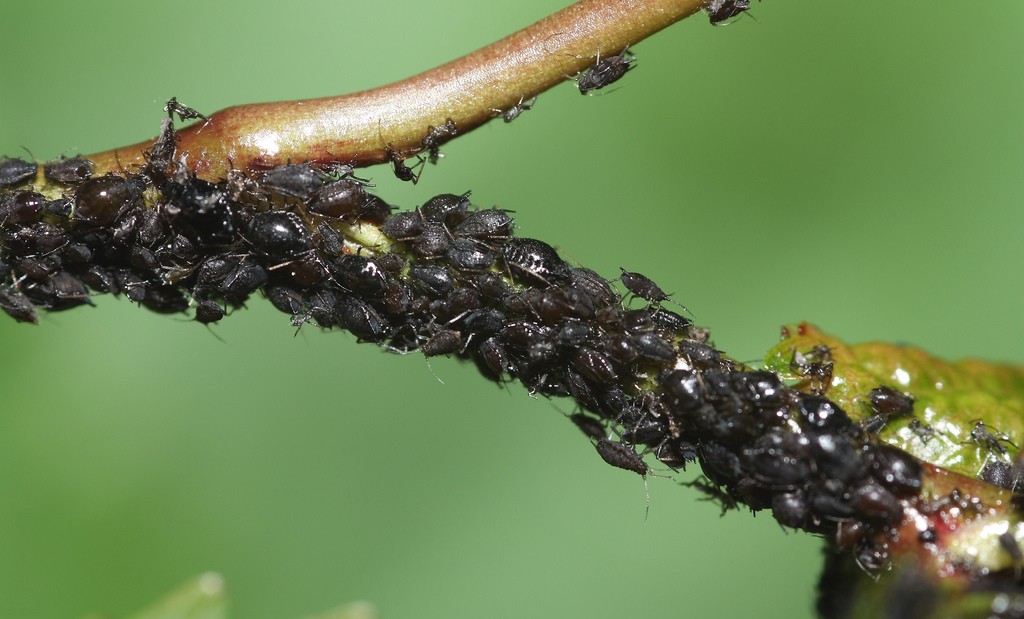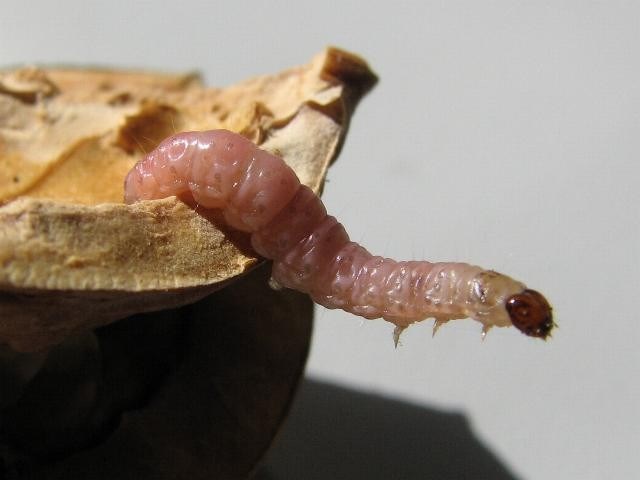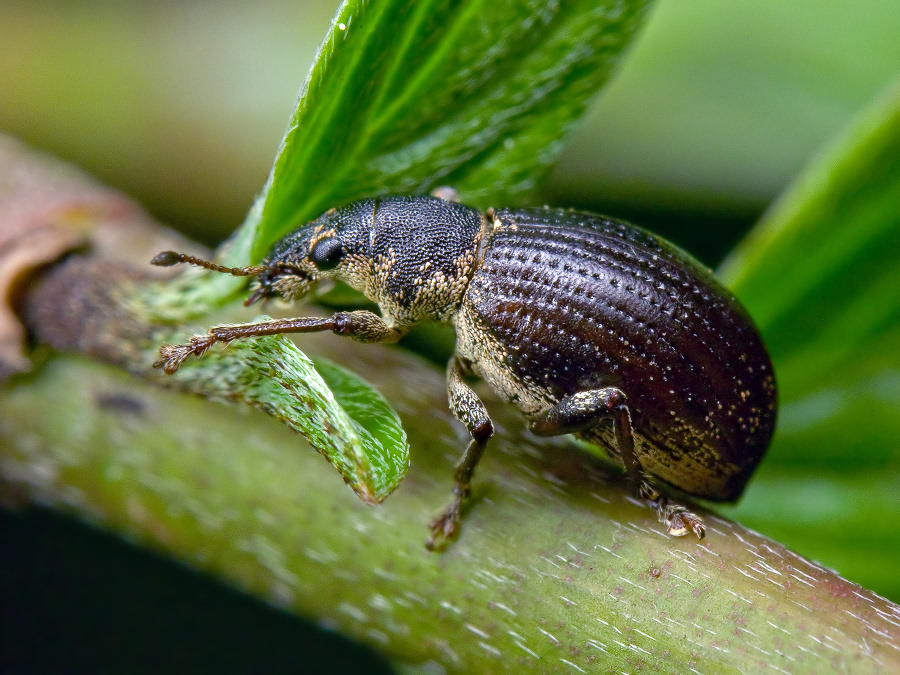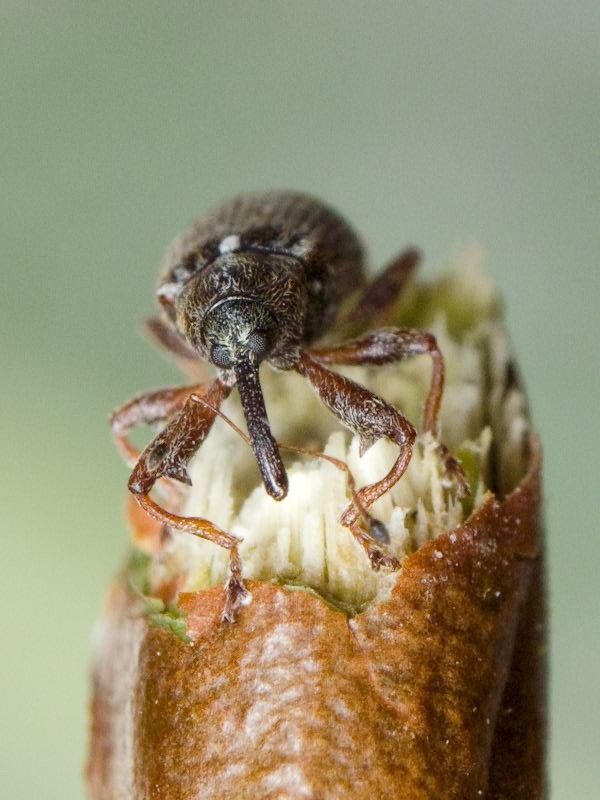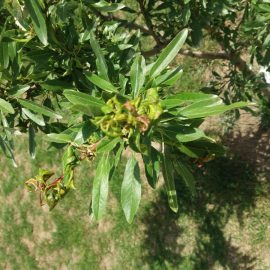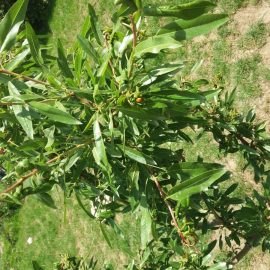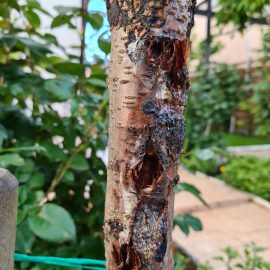Almond treatments, pest and disease control
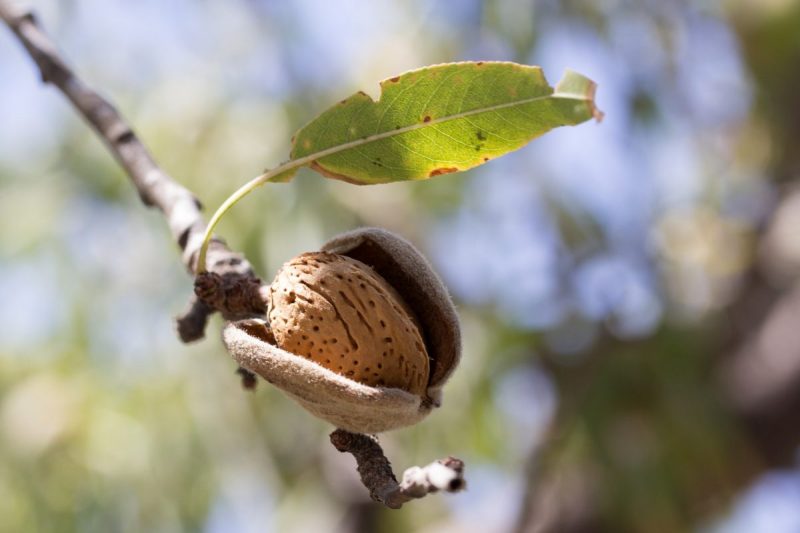
Almond (Amygdalus communis) is an important fruit species, appreciated for its fruit pits. The almond tree is native to Asia and has been cultivated since the time of the Greeks and Romans. Currently, the largest almond-producing country is the United States.
The main diseases of almond
VIRUSES
Sharka (Plum pox virus)
On almond leaves develop circular discoloration spots covering all the leaves. Symptoms disappear during the hot summer months. Circular yellowish spots appear on the fruit, clearly visible on unripe fruit. Attacked fruit falls from the tree before its time. In case of severe attack, circular spots also appear on the fruit pits. The virus is spread through the infected plant material, by treehoppers, aphids, and infected pollen.
Prevention and control measures:
- planting healthy trees;
- removing weeds and shrubs near orchards;
- insecticide treatments to control the insect population.
BACTERIOSIS
Bacterial canker of stone fruits (Pseudomonas syringae pv. morsprunorum)
This disease occurs on young leaves, twigs, and fruit. Small, circular, watery-looking spots appear on the leaves. When humidity is high, bacterial ooze appears on the spot surface and is a yellowish-white, viscous pellicle. The attacked tissues dry out and fall off the leaf in dry weather. Thus, the almond leaves have a pitted appearance. A strong attack causes tree defoliation. Small, pinkish-brown spots appear on the fruit. The attack causes the fruit to deform and the pulp to crack. This causes the almonds to lose their commercial value. Long spots appear on the twigs, and the bark turns brown and gets damaged. The wounds produce a viscous ooze, specific to bacteriosis. The wounds increase in size from year to year and may evolve into open cancers. Bacteria enter the tree through stomata, but most infections occur during grafting.
Prevention and control measures:
- using healthy grafts and rootstocks;
- chemical treatments with specific fungicides.
Crown gall (Agrobacterium radiobacter pv. tumefaciens)
The disease appears as tumors (galls), which vary in size depending on the plant’s age and the affected organ. Initially, small, smooth, and soft tumors appear on roots, stems, and rarely on branches or leaves. With time, the tumors enlarge, become brown or blackish-brown, and acquire a rough appearance. The pathogen enters the almond tree through wounds caused by nematodes, hail, insects, etc. The appearance of this disease is also favored by temperatures between 22 and 30 °C and atmospheric humidity of 80 %.
Prevention and control measures:
- sorting almond saplings before planting;
- almond saplings should be planted on land that has been prepared accordingly;
- disinfecting scissors and tools when moving from one tree to another;
- pruning affected branches up to the healthy area, applying treatment with Bordeaux mixture, and covering wounds with tree wound sealer;
- soaking the sapling roots in a solution of Bordeaux mixture of 1%;
- treatments during vegetation with copper-based products.
MYCOSIS
Brown rot (Monilinia laxa)
This disease attacks all aerial organs of trees, causing significant damage in cold and rainy years. Affected leaves hang down without falling off, flowers brown and wither, and branches bend into a hook shape. Young fruit shrivels, browns, and falls massively. The pulp of mature fruit rots and yellowish-grey spots appear on the outside. Eventually, the fruits mummify and remain on the tree, ensuring disease transmission into the following year. The fungus overwinters on the mummified fruit and in the bark of attacked branches.
Prevention and control measures:
- gathering and destroying attacked fruits;
- pruning and burning of the affected branches;
- pruning the affected branches down to the healthy area, applying treatment with Bordeaux mixture, and covering the wounds with tree wound sealer;
- chemical treatments during the dormant period with copper-based products;
- preventive treatments in vegetation with specific fungicides.
Shot-hole disease (Stigmina carpophila)
The disease is common in neglected orchards and causes significant damage to stone trees (including almond trees). Circular spots appear on the leaves and the tissues turn brown and eventually detach from the rest of the leaf. Punctiform formations appear on the fruit, surrounded by a purplish-red border. The fruit pulp loses its texture and taste. The fungus causes browning of the fruit, followed by wounds. This form of attack is very dangerous because it dries out the fruit buds. The spores spread the fungus and resist over winter in the sap that drains from the wounds. The fungus can also overwinter as mycelium on the branch’s surface.
Prevention and control measures:
- pruning and burning the affected branches;
- covering the wounds resulting from prunings with tree wound sealer;
- after pruning, treating the almond trees with Bordeaux mixture;
- preventive treatments in vegetation with specific fungicides.
Powdery mildew (Sphaerotheca pannosa var. persicae)
The attack on almond trees manifests on young twigs’ leaves as white spots. These spread and cover the entire leaf. The disease progresses and the mycelium becomes greyish and dusty. Attacked tissues shrivel and dry out. The fungus also attacks young fruit. These get covered with white mycelial fuzz. The fruit cracks and rots.
Prevention and control measures:
- balanced fertilization;
- planting resistant almond varieties;
- burning twigs and attacked fruits;
- chemical treatments in vegetation with specific fungicides.
Peach leaf curl (Taphrina deformans)
The disease mainly affects the leaves, but in favorable years it can attack fruits and twigs. Young leaves show deformations on the upper side, being larger than healthy ones. Also, the attacked leaves have a reddish color which later turns yellow. Affected branches and twigs have slow growth and are sensitive to winter frosts. The attack on the fruit is very rare and manifests as small, whitish spots where the tissue rots.
Prevention and control measures:
- chemical treatments with specific fungicides.
The main pests of almond
Codling moth (Cydia pomonella)
It is a polyphagous species that attacks several species of fruit trees (including almond trees). Larvae of different ages attack the fruit. Females lay their eggs directly on the fruit or on the leaves near the fruit. After hatching, the larvae dig galleries in the fruits, leaving droppings inside.
Control methods:
- using pheromone traps to identify adult flight;
- chemical treatments with specific insecticides.
Brown-tail moth (Euproctis chrysorrhoea)
It is a polyphagous species that attacks several trees and fruit trees. It has one generation per year and overwinters like a larva in a cocoon at the top of the twigs. The larvae attack buds and leaves causing defoliation. The presence of this pest is very difficult to detect. Therefore, trees should be examined visually very carefully.
Control methods:
- removing branches on which the larvae are present;
- chemical treatments with specific insecticides.
Fall webworm moth (Hyphantria cunea)
It is a polyphagous species that attacks ornamental trees (mulberry, plane tree, etc.) as well as fruit tree species. It has two generations per year and overwinters as a pupa in the surface layer of the soil. This pest causes tree defoliation and thus lower fruit production. The caterpillars settle on the underside of the leaves and begin to consume them. They also build a kind of nest, inside which they feed.
Control methods:
- chemical treatments with specific insecticides.
The peach twig borer (Anarsia lineatella)
It is a polyphagous species that attacks several species of fruit trees (including almond trees). It develops three generations per year and overwinters as a larva under the exfoliated bark. In the spring, they leave the winter shelter and attack the buds. In young twigs, the larvae gnaw penetrating holes. Newly emerged females lay eggs on the buds, and the larvae will penetrate the fruits of the early varieties. The larvae of the next generations penetrate the fruits in the ripening phase, where they dig deep galleries.
Control methods:
- pruning and destroying the affected branches (twigs);
- chemical treatments with specific insecticides.
Spider mites
They are pests that are very difficult to see with the naked eye. Spider mites are polyphagous species that attack many plants and fruit trees, both cultivated and wild species. They feed on plants’ sap. Following the attack, the almond leaves look parched, the flowers abort and the plant stagnates in growth.
Control methods:
- chemical treatments with specific acaricides.
Oriental fruit moth (Grapholita molesta)
It has 3-4 generations per year and overwinters like a larva in a silky cocoon in the cracks of the bark. This moth attacks the twigs, leaves, and fruits of the almond tree, but it does the most damage to the fruit. The larvae of the first generations attack the twigs and feed on them, causing great damage to newly established orchards and nurseries. The larvae of generations III and IV cause significant damage to the fruit. They enter the fruit through the stalk area or the “tip” area and gnaw irregular galleries around the pit. Fruits stagnate from growth, rot, and fall.
Control methods:
- pruning and destroying attacked fruits and twigs;
- using attractant traps;
- chemical treatments applied during mass flight with specific insecticides.
San Jose scale (Quadraspidiotus perniciosus)
It is a polyphagous species that attacks over 200 species of plants. It has 1-3 generations per year and overwinters as larvae on affected species bark. Females and larvae spread to all organs of the affected plants, including the fruit, and feed on host plants sap. In case of a massive attack, the shields that protect the body of the insect overlap and suffocate the trees. They stagnate from growth, and after 2-3 years they dry out.
Control methods:
- cleaning the branches with a rough brush;
- application of specific treatments during the dormancy period ;
- performing treatments with specific insecticides.
Aphids
They are polyphagous species that migrate from one plant to another or from one species to another. They grow on spontaneous flora and then move on to cultivated species. Aphids appear as colonies on the underside of leaves, on flowers or inflorescences, and on young twigs. Insects sting and suck plants’ sapp, causing stress. In case of a severe attack, it causes the tree’s resistance to disease to decrease.
Control methods:
- chemical treatments with specific insecticides.
Plum Fruit moth (Cydia funebrana)
This species attacks stone fruit trees. It develops two generations per year and overwinters in a cocoon under the bark of trees or in various sheltered places. The larvae penetrate the fruit and feed on the pulp and seeds. The attacked fruits stagnate from growth and fall. The larvae continue to feed on the fallen fruit. After feeding, they come out of the fruit and look for the right place for winter.
Control methods:
- chemical treatments with specific insecticides.
Sciaphobus squalidus
It is a dangerous species that attacks especially buds and flower buds. It develops a generation every two years and overwinters as an adult in the topsoil. In spring the adults emerge, climb the trees and feed on buds and flower buds. The larvae are not harmful to trees, they feed on the roots of spontaneous herbaceous plants.
Control methods:
- mobilizing the soil in the orchard in autumn;
- chemical treatments with specific insecticides.
Apple blossom weevil (Anthonomus pomorum)
It develops one generation per year and overwinters as an adult in sheltered places (tree bark). Adults emerge in spring and feed on young leaves. Females lay eggs in flowers or flower buds. Larvae feed inside the flowers or buds.
Control methods:
- chemical treatments with specific insecticides.
Thrips
They are small pests, hardly visible to the naked eye, that attack a very large number of crop plants or fruit trees. They colonize the growth tips, flowers, and leaves, causing flower abortion and tree growth stagnation.
Control methods:
- using attractant traps;
- performing treatments with specific insecticides.














































































































































































































































































































































































































































